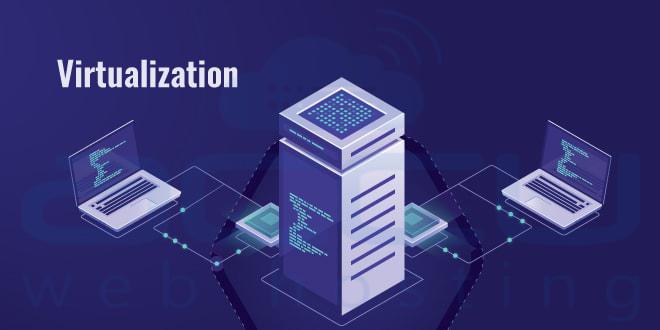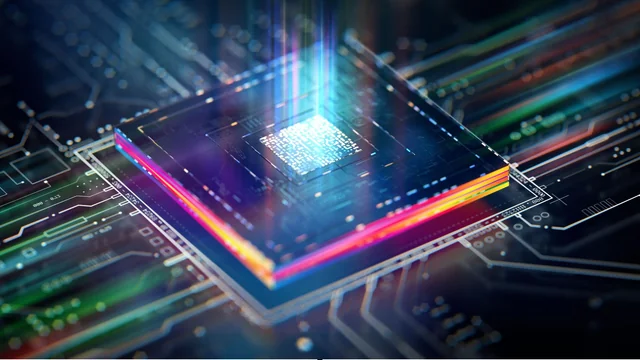How OnePlus Unleashing the Power of Virtualization?
Virtualization, at its core, is the process of creating a virtual instance or representation of physical resources, such as servers, storage, or operating systems. By abstracting these resources, virtualization enables the efficient sharing, allocation, and management of computing power. This technology has evolved to become a linchpin in enhancing scalability, flexibility, and resource utilization in diverse computing environments.
In the ever-evolving landscape of computing, the concept of virtualization has emerged as a transformative force, revolutionizing the way we harness the capabilities of our devices. This article delves into the intricate realms of CPU virtualization, ROM virtualization, and RAM virtualization, exploring the advantages, benefits, and unique features that each brings to the table.
Understanding Virtualization

Virtualization is a technology that enables the creation of virtual instances or environments on a physical device, allowing multiple operating systems or applications to run simultaneously. This process involves abstracting physical resources and presenting them in a way that optimizes efficiency, flexibility, and resource utilization.
CPU Virtualization
In the intricate world of modern computing, where efficiency, scalability, and resource optimization are paramount, CPU virtualization emerges as a linchpin technology. This transformative approach to harnessing computational power goes beyond the confines of traditional single-core architectures, introducing a paradigm shift that brings forth advantages, benefits, and unique features that redefine how we interact with and utilize central processing units (CPUs).
At its essence, CPU virtualization is the process of abstracting and partitioning a physical CPU into multiple virtual instances. These virtual CPUs, often referred to as vCPUs, operate independently, enabling multiple operating systems or applications to run concurrently on a single physical processor. The goal is to maximize the utilization of computing resources, optimize performance, and enhance the overall efficiency of computing environments.
Advantages
- Enhanced Resource Utilization
CPU virtualization allows multiple virtual machines to share the processing power of a single physical CPU. This leads to optimized resource utilization, as the CPU's capabilities are distributed efficiently among different tasks or operating systems.
- Isolation and Security
Virtualization provides a layer of isolation between virtual machines, enhancing security. Compromised processes or applications in one virtual environment are contained, preventing them from affecting others.
- Improved Scalability
CPU virtualization facilitates the creation of scalable infrastructures. As computing needs grow, additional virtual machines can be instantiated, seamlessly adapting to changing workloads without the need for physical hardware upgrades.
Benefits
- Consolidation of Workloads
Through CPU virtualization, multiple workloads or applications can coexist on a single physical server, reducing the need for numerous individual machines. This consolidation leads to space and energy savings.
- Flexible Resource Allocation
Virtualization allows administrators to allocate and reallocate CPU resources dynamically based on the needs of different virtual machines. This flexibility ensures optimal performance for critical applications.
- Efficient Testing and Development
Developers can leverage CPU virtualization to create isolated testing environments, making it easier to test applications across different operating systems or configurations without the need for separate physical machines.
ROM Virtualization

In the intricate tapestry of computing, Read-Only Memory (ROM) virtualization emerges as a pioneering force, reshaping how we perceive and interact with the fundamental firmware of our digital devices. This groundbreaking technology transcends conventional boundaries, introducing a new paradigm where the immutability of system states is both a cornerstone and a catalyst for innovation. This comprehensive exploration delves into the nuances, advantages, and transformative potential of ROM virtualization.
At its essence, ROM virtualization involves the creation of virtual instances of a system's Read-Only Memory. Unlike traditional ROM, which is fixed and unalterable, virtualized ROM introduces a layer of dynamism, enabling the rapid deployment, testing, and evolution of firmware states. This technology plays a pivotal role in ensuring system stability, security, and adaptability.
Advantages
- Immutable System States
ROM virtualization involves creating read-only instances of a system's firmware. This immutability ensures that the virtualized system remains consistent and stable, minimizing the risk of unauthorized changes.
- Rapid System Deployment
Virtualized ROMs can be duplicated and deployed swiftly, enabling the rapid instantiation of multiple virtual machines with identical system states. This is particularly beneficial for deploying consistent server environments.
- Snapshot and Rollback
ROM virtualization allows the creation of snapshots, capturing the state of a virtual machine at a specific point in time. In case of issues or changes, administrators can easily roll back to a previous snapshot, ensuring system reliability.
Benefits

- Improved System Maintenance
The immutability of ROM virtualization simplifies system maintenance. Updates or modifications can be tested on a virtual machine, ensuring compatibility and stability before implementation on physical systems.
- Enhanced Security
Virtualized ROMs, being read-only, reduce the attack surface for potential security threats. Unauthorized alterations to critical system firmware become more challenging, enhancing overall system security.
- Portability and Compatibility
Virtualized ROMs facilitate the creation of portable system images that can be deployed across various platforms. This compatibility simplifies system migration and ensures consistent behavior across diverse hardware environments.
RAM Virtualization

In the intricate world of modern computing, where efficiency, scalability, and resource optimization are paramount, CPU virtualization emerges as a linchpin technology. This transformative approach to harnessing computational power goes beyond the confines of traditional single-core architectures, introducing a paradigm shift that brings forth advantages, benefits, and unique features that redefine how we interact with and utilize central processing units (CPUs).
At its essence, CPU virtualization is the process of abstracting and partitioning a physical CPU into multiple virtual instances. These virtual CPUs, often referred to as vCPUs, operate independently, enabling multiple operating systems or applications to run concurrently on a single physical processor. The goal is to maximize the utilization of computing resources, optimize performance, and enhance the overall efficiency of computing environments.
Advantages
- Dynamic Resource Allocation
RAM virtualization enables the dynamic allocation and deallocation of memory resources to virtual machines based on their current workload. This flexibility ensures that each virtual machine receives the required amount of memory for optimal performance.
- Resource Overcommitment
Through techniques like memory ballooning, RAM virtualization allows for resource overcommitment, where more virtual memory is allocated than physically available. This enables efficient utilization of memory resources across multiple virtual machines.
- Isolation and Performance
Virtualized RAM ensures the isolation of memory spaces for different virtual machines, preventing one from impacting the performance of others. Each virtual machine operates within its allocated memory boundaries, ensuring stability.
Benefits

- Efficient Resource Utilization
RAM virtualization optimizes the utilization of physical memory resources by dynamically adjusting allocations based on the needs of active virtual machines. This ensures that memory is used efficiently across the virtualized environment.
- Improved Performance Scaling
Virtualized RAM allows for seamless scaling of memory resources as virtual machine workloads fluctuate. This dynamic scaling ensures that performance remains consistent, even during periods of increased demand.
- Enhanced Fault Tolerance
In the event of a memory-related issue within a virtual machine, RAM virtualization allows for swift isolation and resolution without impacting the stability of other virtual machines. This fault tolerance ensures uninterrupted operation.
Conclusion
In the dynamic landscape of computing, virtualization stands as a cornerstone technology, unlocking new possibilities and efficiencies across various domains. CPU virtualization, ROM virtualization, and RAM virtualization collectively contribute to streamlined operations, improved resource utilization, and enhanced system security. Embracing these virtualization techniques propels us into an era where computing resources are harnessed with unprecedented flexibility and efficiency. As technology continues to evolve, the journey of virtualization unfolds, promising continuous innovation and transformative capabilities for the digital age.
Unveiling the killer flagship Trinity Engine
Apple’s Generative AI Features Coming
Related post
0 comments
Leave a reply
Please Login or Register to Comment. Get StartedApple’s Generative AI Features Coming







